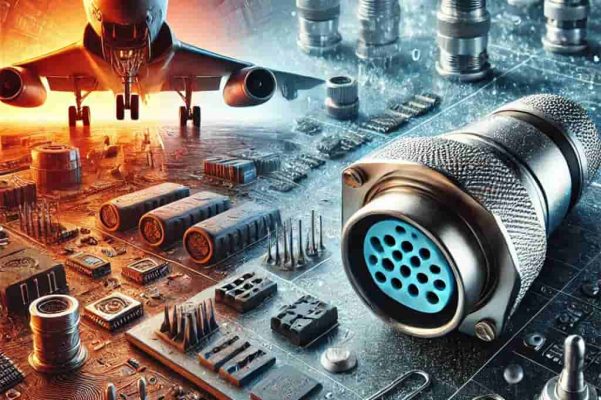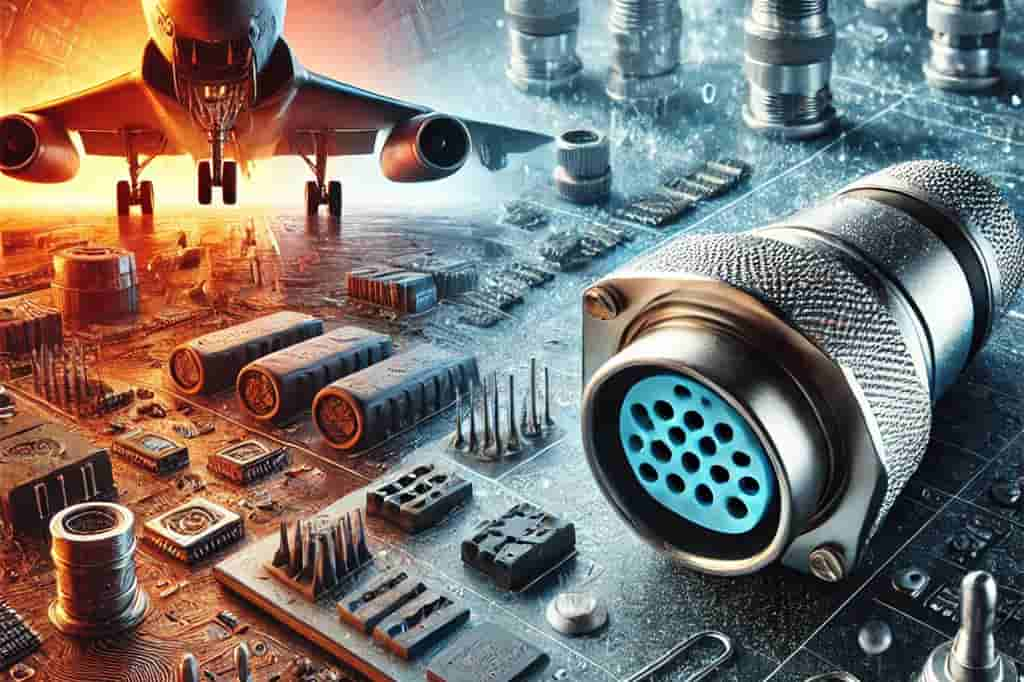In the aerospace industry, where every component must perform flawlessly under the most challenging conditions, one unsung hero stands out: the electronic connector. These little powerhouses are crucial for keeping all the complex systems in aircraft and spacecraft running smoothly—whether it’s handling communication, distributing power, or transferring data between subsystems. That’s where Konnra comes in. We understand just how vital these connectors are, and we’re here to help you navigate the unique demands of the aerospace environment, like extreme temperatures and intense vibrations. In this blog, we’ll dive into how the right connectors can meet these challenges head-on, and we’ll share some real-world examples of their applications. With Konnra by your side, you’ll have the best solutions to help your systems soar to new heights!

Special Requirements for Electronic Connectors in Aerospace
The aerospace field imposes some of the most demanding conditions on electronic components, and connectors are no exception. To function reliably in such an environment, electronic connectors must adhere to a series of rigorous standards. Below are some of the key requirements that differentiate aerospace connectors from those used in other industries.
1. High Reliability and Durability
Reliability is paramount in aerospace applications, where failure can have catastrophic consequences. Connectors used in aircraft and spacecraft must demonstrate exceptional durability to withstand the rigors of operation, which includes high vibrations, mechanical shocks, and repeated cycles of engagement and disengagement. Aerospace connectors are often designed with redundant contact points to ensure a secure and stable connection, even in the most extreme conditions.
2. Temperature Resistance
Aerospace environments are characterized by extreme temperature fluctuations, ranging from the intense heat experienced during takeoff and re-entry to the frigid cold of outer space. Electronic connectors must be capable of operating within a broad temperature range, typically from -65°C to +200°C or higher, without degrading in performance. Materials used in these connectors are carefully selected to maintain their properties under these conditions.
3. Resistance to Corrosion and Environmental Factors
Exposure to harsh chemicals, moisture, and corrosive elements is common in aerospace environments. Connectors must be resistant to these factors to prevent corrosion, which can lead to electrical failures. Sealing technologies, such as hermetic sealing and the use of corrosion-resistant materials like stainless steel or specialized coatings, are often employed to protect connectors from environmental damage.
4. Lightweight and Compact Design
Weight is a critical consideration in aerospace design, where every gram counts. Electronic connectors used in this field must be lightweight and compact without compromising on performance. This requirement drives the development of miniaturized connectors that offer high performance in a small footprint, contributing to the overall efficiency and fuel economy of aircraft and spacecraft.
5. Electromagnetic Interference (EMI) Shielding
In the aerospace industry, the electronic systems must operate without interference from other onboard systems or external sources. Connectors are often equipped with EMI shielding to prevent electromagnetic interference that could disrupt the operation of critical systems. Effective EMI shielding is crucial for maintaining the integrity of communications and data transmission in aerospace applications.
6. Compliance with Aerospace Standards
Connectors used in aerospace applications must comply with stringent industry standards, such as those set by the International Electrotechnical Commission (IEC), the European Space Agency (ESA), and the National Aerospace Standards (NAS). These standards ensure that connectors meet the necessary performance and safety requirements, providing confidence in their use in critical applications.
Application Examples of Electronic Connectors in Aerospace
Electronic connectors are integral to a wide range of aerospace applications, from commercial aircraft to military and space exploration vehicles. Below are some examples of how these connectors are used in the aerospace industry.
1. Avionics Systems
Avionics systems are the electronic systems used on aircraft, satellites, and spacecraft, including communication, navigation, and the management of multiple onboard systems. Electronic connectors are crucial in these systems for ensuring reliable data transmission and power distribution. They connect components such as flight control computers, navigation systems, and communication devices, which are vital for the safe operation of the aircraft.
2. Power Distribution Systems
In aerospace vehicles, power distribution is a critical function that ensures all onboard systems receive the necessary power to operate. Connectors in these systems must handle high currents while maintaining a secure connection. Aerospace-grade power connectors are designed to be highly reliable, with features such as multiple contact points and locking mechanisms to prevent disconnection during operation.
3. In-Flight Entertainment and Communication Systems
Modern commercial aircraft are equipped with advanced in-flight entertainment (IFE) and communication systems that enhance passenger experience. Electronic connectors in these systems must provide high-speed data transmission while being compact and lightweight. These connectors are used to connect displays, audio systems, and network components, ensuring seamless entertainment and connectivity for passengers.
4. Satellite Systems
Satellites operate in the harsh environment of space, where they are exposed to extreme temperatures, radiation, and vacuum conditions. The connectors used in satellites must be designed to withstand these challenges. They are used in various satellite subsystems, including communication modules, power management systems, and payload instruments, ensuring the satellite’s functionality and longevity.
5. Military Aircraft and Defense Systems
Military aircraft and defense systems require connectors that can perform under the most extreme conditions, including high-speed flight, combat situations, and exposure to harsh environmental elements. Electronic connectors in military applications are designed for ruggedness and reliability, often featuring enhanced shielding, corrosion resistance, and mechanical strength. They are used in applications such as radar systems, weapon control systems, and electronic warfare equipment.
Challenges for Electronic Connector Manufacturers
The stringent requirements and specialized applications in the aerospace field present significant challenges for electronic connector manufacturers. Meeting the high standards of reliability, durability, and performance while maintaining cost-effectiveness requires ongoing innovation and investment in research and development. Additionally, manufacturers must navigate complex regulatory environments and ensure compliance with international aerospace standards.
Electronic connector manufacturers must also focus on the miniaturization of components, as the demand for smaller, lighter connectors continues to grow. This trend is driven by the need to reduce the overall weight of aircraft and spacecraft, thereby improving fuel efficiency and reducing operational costs.
Conclusion
Electronic connectors are vital to the aerospace industry, ensuring the safe and reliable operation of everything from avionics to power distribution systems. Their critical role in connecting essential systems underscores the need for connectors that can meet the rigorous demands of the aerospace environment. As the industry continues to advance, electronic connector manufacturers must innovate to develop solutions that can withstand extreme conditions while also addressing the growing demand for miniaturization and high performance.
If you’re looking to learn more about how the right connectors and wiring harnesses can elevate the safety, efficiency, and reliability of your aerospace systems, we invite you to visit the Konnra website. Discover how Konnra’s expertise and innovative solutions can help you meet the unique challenges of the aerospace industry.










